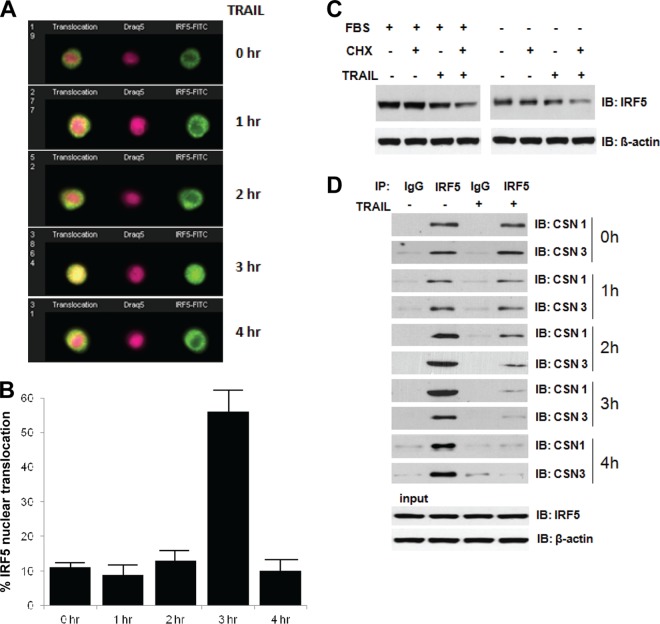Fig 7.
TRAIL triggers IRF5 nuclear localization and degradation due to loss of the CSN/IRF5 interaction. (A) THP-1 cells were treated with 25 ng/ml Superkiller TRAIL and intracellularly stained with FITC-conjugated IRF5 (green) and DRAQ5 (red). Representative images from the Amnis ImageStream are shown for each time point. (B) Graphic summary of endogenous IRF5 nuclear translocation in THP-1 cells after treatment with TRAIL. Data are representative of three independent experiments. Plotted values are means ± SDs. (C) TRAIL enhances IRF5 degradation. THP-1 cells were cultured under normal conditions with serum (FBS positive [+]) or without serum (serum starved, FBS negative [−]) and treated with CHX and/or Superkiller TRAIL for 4 h. Cells were harvested for immunoblot analysis of endogenous IRF5 and β-actin. (D) THP-1 cells were left untreated (−) or treated (+) with Superkiller TRAIL over the indicated time course and then harvested for immunoprecipitation with anti-IRF5 antibodies (IP: IRF5) or nonspecific IgG control antibodies (IP: IgG). Interaction of IRF5 with CSN1 or CSN3 was determined by immunoblotting. Levels of IRF5 and β-actin in whole-cell lysates collected at the 4-h time point for immunoprecipitations are shown and are representative of what was found at all time points examined.

